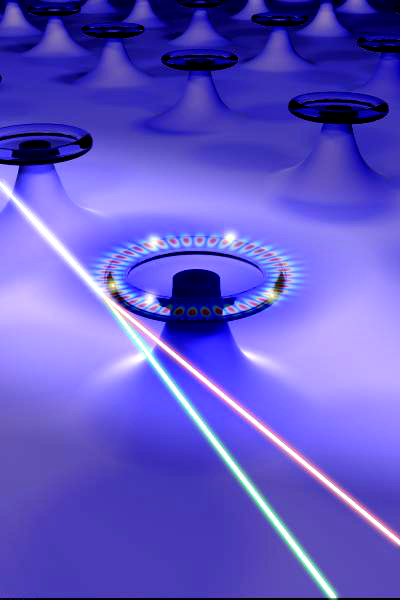Laser split to get fix on nanoparticles
 Nanoparticles - engineered materials the size of a few atoms – will be a constant feature of the future, but the tiniest inventions come with the biggest risks.
Nanoparticles - engineered materials the size of a few atoms – will be a constant feature of the future, but the tiniest inventions come with the biggest risks.
Nanoparticles can benefit human health, as in some innovative early cancer treatments, but they can also interfere with it through viruses, air pollution, traffic emissions, cosmetics, sunscreen and electronics.
To keep track of the miniscule material, engineers have developed a sensor that can detect and count nanoparticles as small as 10 nanometres, one at a time.
The collaborative research team from institutes in China and the US say the sensor could potentially detect much smaller particles, viruses and individual molecules.
The micro-laser sensor sits inside a silicon dioxide chip, and has some key advantages on previous models.
The Raman micro-laser sensor does not need to be “doped up” with rare-earth chemicals to provide optical gain, nor does it need to match the energy transitions of ions to generate optical gain.
This makes it cheaper and faster to build and use, while also enabling users to sense a much greater range of particles and substances without the need for new equipment.
The team integrated Raman lasing in a silica micro-cavity with a new mode splitting technique to develop a new, powerful sensor that more readily detects nanoparticles.
Researchers are confident the technology will benefit the electronics, acoustics, biomedical, plasmonics, security and meta-materials fields.
The micro-sensor is in a class called whispering gallery mode resonators (WGMRs), which work similar to the whispering gallery in London's St. Paul's Cathedral, where a person on one side of the gallery can hear a message spoken to the wall by another person on the other side. The micro-laser device does much the same thing with light frequencies rather than audible ones.
Research engineers are excited by the prospect of the new design supporting “frequency degenerate modes”; patterns of excitation inside the mini-laser's doughnut-shaped ring that are of the same frequency.
One portion of light beamed by the laser goes counter-clockwise, another goes clockwise. When a particle lands on the ring and scatters energy between these modes, the single lasing line splits into two lasing lines with different frequencies.
“It doesn't matter what kind of wavelength is used, once you have the Raman laser circulating inside and there is a molecule sitting on the circle, when the beam sees the particle it will scatter in all kinds of directions,” lead researcher Dr Lan Yang says.
“Initially you have a counter-clockwise mode, then a clockwise mode, and by analysing the characterization of the two split modes, we confirm the detection of nanoparticles.”
The report “Highly sensitive detection of nanoparticles with a self-referenced and self-heterodyned whispering-gallery Raman microlaser”, will be published in an upcoming edition of the Proceedings of the National Academy of Sciences.







 Print
Print